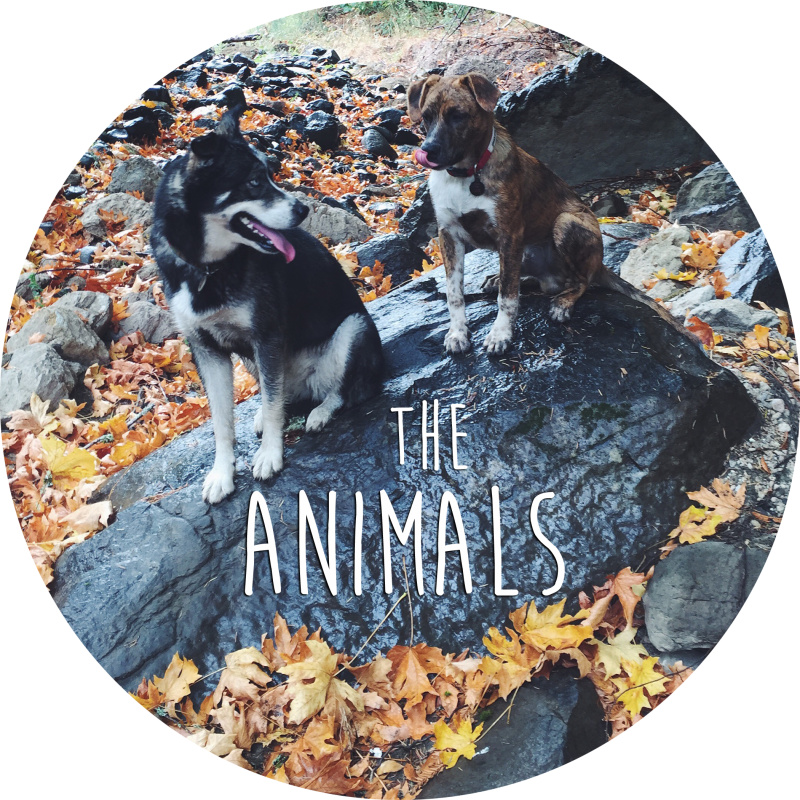Be Your Dog's Advocate
The other day at work, I was ringing up a customer, who is also one of my dog training clients. Her dog, an adorable and fluffy medium-sized poodle, looks very tempting to pet, but he is not comfortable with being approached by strangers, and can be very defensive of his owner. Knowing this, I was very surprised when a man approached, heading towards the dog while the owner looked on nervously, and said nothing to the man. The dog's body language was tensing and I spoke up and politely asked the man to refrain from touching or approaching the dog because he isn't comfortable with strangers, especially in a highly stimulating environment like the store. The owner looked relieved.This is something I've seen time and time again – dog owners know their dogs may not be the best with other people or other dogs and yet they feel uncomfortable setting boundaries and allow people and other dogs to approach, while their dogs show more and more signs of discomfort, and ultimately end up growling, barking, or lunging. And many times the dogs are reprimanded for their reaction! I recently watched a dog with pinned ears, a tucked tail, and whale eye being coaxed to greet another on-leash dog, and when she growled to express her intense discomfort the owner told her NO, and attempted the greeting once again until I stepped in and suggested that maybe it wasn't necessary to do an on-leash greeting with a strange dog.
Even on the other end of the spectrum, I've often seen people look on in frustration as their excitable dog jumps all over a well-meaning stranger who says, "It's okay, I don't mind." It can be very frustrating when you are trying to teach a dog polite greetings, with all four paws on the floor, and you are unable to keep consistent with your parameters that the dog is only to receive attention when they are sitting politely.
But in all of these cases, we do actually have the power to advocate for our dog and our training. It is okay to ask for space for your dog, to say no thank you to a greeting, of a dog or human, or to ask that your dog perform certain behaviors before a greeting. I think we are often worried about appearing rude, or having our dog mislabeled as a bad or aggressive dog when we say no thank you, or ask for space, but it is 100% not rude to express what you need for the comfort and safety of your dog and others. It may sound silly, but practice your polite "no thank-yous" at home if you need to, so that the appropriate words come easily! A few go to phrases that I like to use are:
"No thanks, he's in training."
"We're feeling a little overwhelmed today, so we're going to keep a our distance."
"No thanks, she's a bit sensitive."
"We prefer not to do on-leash greetings, thanks though!"
A classmate of mine who has an over-excitable dog has taught her dog to wave on cue so that when kids want to say hi she is able to say, "Okay! Stay right there and she'll say hi!" She cues the wave, the kids are impressed, and they say goodbye on move on. For Koa, since she is fine with most people but not super interested in being petted, especially on the head, I will usually substitute the request to pet her by giving the person a treat and telling them they may give it to her if she sits. Recently on a hike we had a line of 15+ kids waiting to give her a treat, and since she is okay with this proximity it ended up being a great way to reinforce a calm sit while lot's of strangers approached and interacted with her.
Pay attention to your dog's body language and look for stiffness, stiff and erect tail carriage, or a tail tucked beneath their body, ear pinned back, wide, glassy eyes or the whites of the eyes showing, a tightly closed mouth, or tongue flicking out the corners of the mouth. These are all signals that say, I'm not comfortable with what's happening. Never scold your dog for growling, because this is a super important signal. Dogs need to be able to express discomfort — the horror stories that we so often hear about a dog that bites "without warning" is usually giving off many of these warning signals, and has often been taught not to use their vocalizations as an additional warning.
These are the only tools that your dog has to say no, and you need to be the spokesperson for their needs. Humans are not always the best listeners, and some people approach, or allow their dogs to approach without permission. In these cases, it is 100% appropriate to let go of being polite and physically stand between the other person and your dog, tell them to STOP, or put your hand out in the universal police officer "stop" position to avoid a confrontation. It's way better for someone to think you're unpleasant than it is for your dog to be put over threshold and have their progress undone, or for your dog to be pushed to the point of biting a person or dog!
When it comes to greeting a strange dog keep these simple rules in mind:
1.) Always ask for permission before approaching (saying "can I pet your dog" while already reaching your hand out does not count.)
2.) Do not stare into a dog's face directly before getting permission to interact.
3.) If a pet owner asks you to wait for the dog to sit, be patient, and help them out by turning your body away if the dog hops up, until they are able to settle again.
4.) NEVER let your dog approach a strange dog without checking in with the owner first! (Again, saying "it's okay, he's friendly" as your dog runs up does not count! Make sure your dog is calmly waiting beside you until you get an enthusiastic okay. I will say, even then it's best to use caution around leashed dogs as some owners overestimate their dogs' comfort levels.)
5.) If the owner says no, respect their wishes, move away and be kind to them.
What are some of the tricks you use to keep your dog safe and comfortable when interacting (or not) with strangers? I'd love to hear your ideas in the comments!








